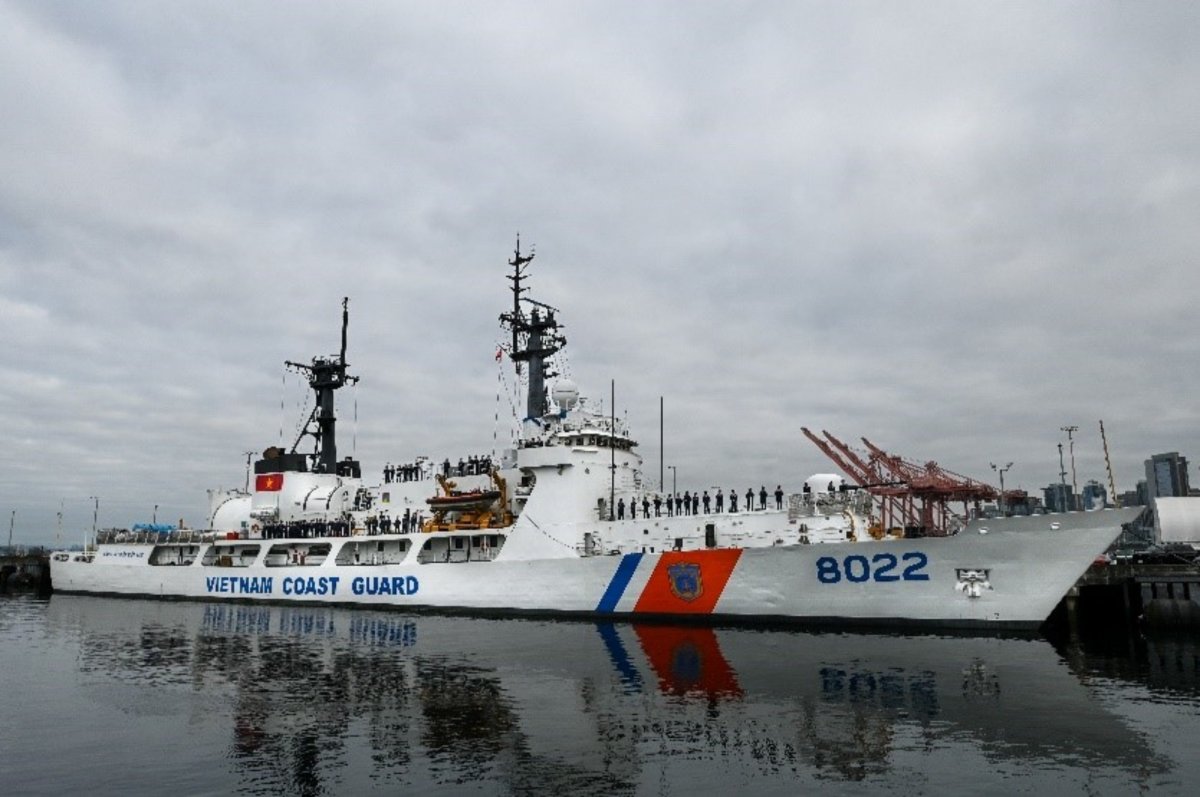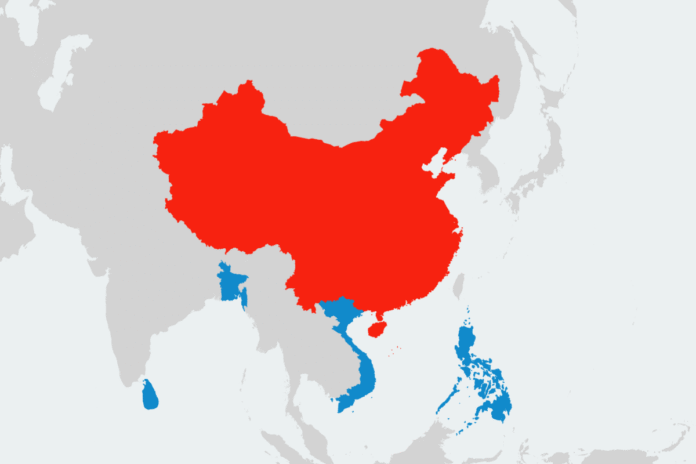The United States recently completed the transfer of 10 former Coast Guard ships to four Asian countries, including two involved in territorial disputes with China, a Newsweek map shows.
The handover of cutters held both practical and politically symbolic significance in response to China‘s assertiveness in the South China Sea, where it claims sovereignty over most of the waters, naval analyst Collin Koh told Newsweek.
Newsweek has contacted the U.S. Coast Guard and China’s Foreign Ministry for comment via email.
Why It Matters
In June, the former U.S. Coast Guard ship USCGC Mellon—one of 12 Hamilton-class high-endurance cutters—arrived in Vietnam to continue its service with the Southeast Asian nation’s coast guard, marking the third transfer of this class of cutter to the country.
Three other Hamilton-class ships are serving in the Philippine navy. Both Hanoi and Manila have overlapping sovereignty claims with Beijing in the South China Sea, where China maintains a persistent presence with the world’s largest coast guard fleet.
China has rapidly expanded its military footprint across the Indian Ocean, and Bangladesh and Sri Lanka have also received a pair of Hamilton-class ships for their navies.
What To Know
Following the transfer of the final high-endurance cutter to Vietnam, the U.S. Coast Guard announced last week that all Hamilton-class ships had been handed over to their respective foreign recipients as “excess defense articles”—including two vessels delivered to Nigeria.
Such transfers of decommissioned vessels align with the country’s Indo-Pacific strategy, the U.S. Coast Guard said, as they help bolster security and build partnerships in the region.
The 2,700-ton Hamilton-class ships, commissioned between the 1960s and 1970s, have been replaced by the Legend-class national security cutters. Considered the largest and most advanced vessels in the U.S. Coast Guard, they are capable of supporting a wide range of missions.
Koh, a senior fellow at the Institute of Defense and Strategic Studies in Singapore, described the U.S.’s transfer of Hamilton-class cutters to Southeast Asian countries as significant, adding the right type of maritime asset while strengthening their fleets of offshore patrol vessels.
Citing challenges—such as higher sea states, vast distances from shore infrastructure and the need for wide-area surveillance and enforcement—the analyst said the offshore patrol vessel was the quintessential asset for missions in the disputed waters of the South China Sea.

U.S. Mission to Vietnam
While the Pentagon has assessed that the Chinese coast guard possesses more than 150 patrol vessels weighing more than 1,000 tons, Koh argued that neither Vietnam nor the Philippines has a practical need to match China “vessel for vessel” to project a sustained presence.
A handful of cutters transferred to these countries would represent a significant leap in their ability to maintain what the analyst called a “sustained peacetime constabulary presence” in the South China Sea as this class of ship is larger and offers greater range and endurance.
What People Are Saying
The U.S. Coast Guard said in a news release on June 27: “Excess Defense Articles (EDA) transfers help to develop relationships with partner nations and allies to enhance the pursuit of cooperatively shared maritime safety and security goals. In addition to building maritime capacity among strategic partners, the EDA program has saved the Coast Guard around $41 million in disposal costs for the decommissioned high endurance cutter fleet.”
Collin Koh, a senior fellow at the Institute of Defense and Strategic Studie, told Newsweek: “The [Hamilton-class] ship itself sends a veritable signal of these countries’ determination to hold their ground against Chinese transgressions, and also reflects their growing security ties with Washington—which in some ways complicates Beijing’s intentions and plans in its exercise of coercion against these [Southeast Asian] rivals.”
What Happens Next
The U.S. is expected to continue its defense cooperation with allies and partners across the Indo-Pacific region. It remains to be seen whether additional military equipment, including decommissioned naval and coast guard ships, will be transferred to countries in the region.


























